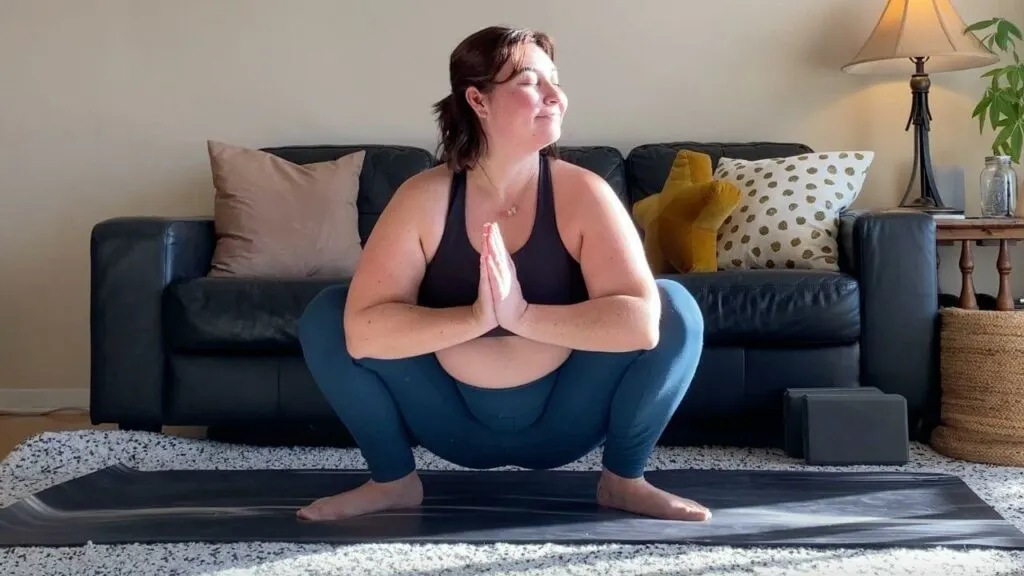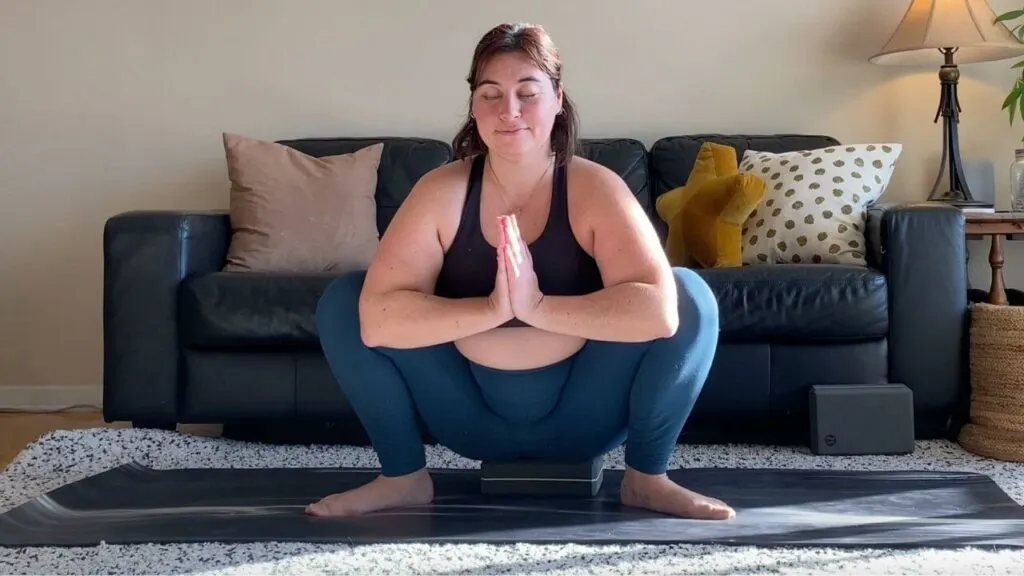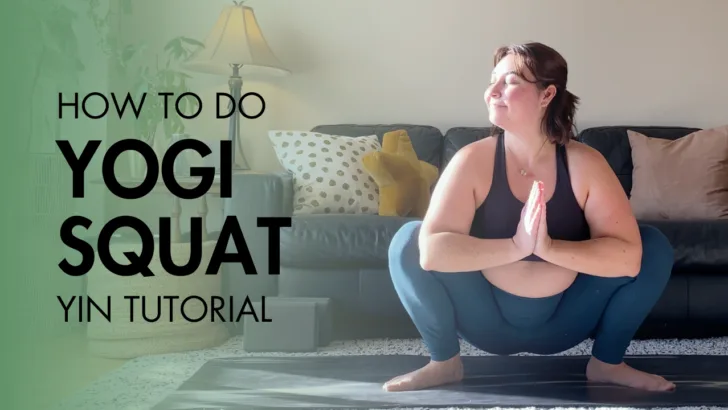Yogi squat, otherwise known in Sanskrit as Malasana, is a very common pose for people outside of the West. If you’ve ever been to Asia you may have even come across a squat toilet and using yogi squat is just the pose you would use while doing your business! Squatty potties in the West have helped to adapt this pose, but with all the benefits it has, I highly recommend adding it to your yin yoga practice.
Get into Yogi Squat Step-by-Step
- Begin in a forward fold.
- Walk your feet out to about mat-width distance apart. Point your toes out.
- Drop your sit bones towards the mat so you land in a squat.
- Draw your hands to prayer at your heart center.

Benefits
- Physical: The author of Move Your DNA, Katy Boman, has a strong stance on the importance of squatting: “Squatting is a critical component of a human’s physical experience.” Yogi squat is no exception and is wonderful for hip and ankle mobility. It also strengthens your ankles, is good for digestion, and aids in a stiff lower back.
- Energetic: The inner groin stretch stimulates the Liver and Kidney meridians, while the thighs and belly may tap into the Spleen and Stomach meridians. Additionally, if you feel it in the ankles the Gallbladder, and Urinary Bladder meridians are stimulated.
- Emotional & Mental: A very centering pose, it’s said to assist in decision-making, creativity, and attuning to your wisdom. Yogi squat assists in opening all of the chakras and it is a pose I use most often in my full moon yoga classes.
Contraindications
- For discomfort in the hips try widening or narrowing your stance.
- For discomfort in the knees or ankles, try keeping your heels off of the floor.
- You may also try pointing your toes more forward or out.
Variations
- Supported Squat: There are a few variations to support yourself in this pose. If your ankles lift off of the mat, place a folded blanket under your heels. If it causes a lot of stress on your knees, sit on one or two blocks. Remember that intensity grows with time as you hold the pose. If you feel it in the knees when you first start, sitting on a prop is recommended.
- For a neck stretch, interlace your hands behind your head and round your spine forward.
- Happy baby, child’s pose, and butterfly pose are alternative options.

Get Out of the Pose
- Place your hands on the mat in front of you.
- Lift your hips up.
- Walk your feet into hip-width distance apart.
Counter Poses
How Long to Hold Yogi Squat?
- 1-3 minutes.
- This pose can be intense for students. It can be done in 1-minute increments, taking breaks between.
- I love this pose and oftentimes hold for longer.

